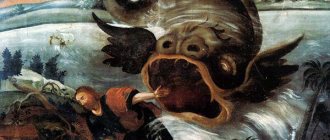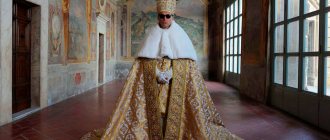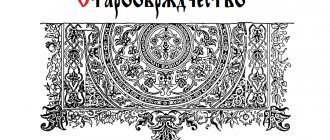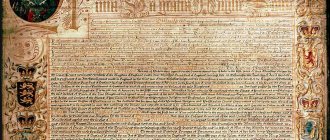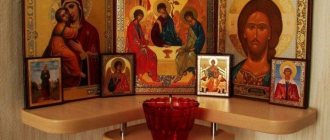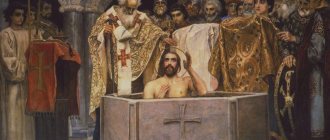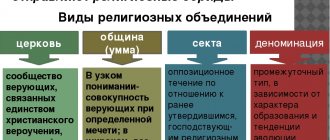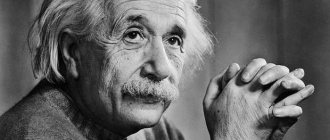Devadatta's Schism
This is the shortest schism on this list, as most of them survive in some way to the present day, and the Devadatta schism is an event that occurred in the early days of Buddhism. The Buddha's cousin sought to impose stricter laws on his fellow monks, insisting that they all lead a more ascetic lifestyle. (One of the harshest measures was that he believed that they should not live in buildings, but instead live in the forest all their lives.) He then tried to take on a leadership role, but the Buddha rejected his ideas, even going so far as that he issued a formal act of proclamation against Devadatta, who was becoming more and more angry with the Buddha.
As a result, Devadatta organized three assassination attempts on Buddha:
- He sent assassins who, instead of killing Buddha, were converted.
- Attempting to throw a boulder from a mountainside onto Buddha.
- Freeing an elephant while Buddha was collecting alms.
All of them were unsuccessful. Although Devadatta initially managed to convince 500 Buddhists to join him, they later abandoned him.
“You shouldn’t stop people from going crazy”: quotes from Chekhov that are very relevant today
A beautiful Kazakh woman, whom the country's most famous comedian Nurlan Saburov is married to
How to eat grapefruit correctly so as not to feel bitterness
Radical Reformation and Anabaptism
Anabaptism was formed as a result of a split in Protestantism. But some argue on this point, believing that it was formed in the early 1600s, along with other new sects. The main difference was that the Anabaptists believed in adult baptism. They were also ardent pacifists and refused to take oaths, which greatly increased their persecution.
The most famous story involving Anabaptists is the Munster Rebellion. Then radical Anabaptists, led by the triumvirate of Bernhard Rothmann, Jan Matthies and Jan Van Leyden, sought to create a communal paradise in the German city of Münster. Eventually the situation degenerated into a siege, and Mattis died in a futile attempt to become the second Gideon. Van Leyden then became leader. The besiegers eventually captured the city, executing a number of prominent Anabaptists. It is noteworthy that the iron baskets in which their bodies were displayed still hang on the spire of St. Lambert's church, and the corpses themselves were removed some fifty years after the rebellion.
The emergence of Protestantism
Protestantism originated at the beginning of the 16th century in Germany. Catholic monk and theologian Martin Luther expressed dissatisfaction with the actions of the Roman Catholic Church, primarily with the widespread sale of indulgences - a document that for a certain fee absolves sins or cancels the effect of penance previously imposed on a person. Martin Luther outlined his criticism in the document “95 Theses against the sale of indulgences (1517).”
These theses received wide publicity and distribution in the German lands. Luther rejected the demands of the church authorities to renounce his ideas, as a result he was excommunicated from the Catholic Church and recognized as a heretic. But at the same time, he managed to gain the trust of many Catholics, who were also dissatisfied with the actions of the priesthood and the interpretation of Holy Scripture by the Pope and Vatican theologians.
How did Protestants appear? As a result of Luther's actions and the ongoing discussion of his ideas, a large anti-Catholic movement was formed that spread to most of Germany. And in 1526, 6 German princes and 14 cities filed the “Speyer Protest” against a document in which Martin Luther was recognized as a heretic. From the name of this protest, the religious anti-Catholic movement received the name “Protestantism”.
Nestorian Schism
Nestorius was the Patriarch of Constantinople, widely known as the spiritual leader of Eastern Orthodoxy in the 5th century. The controversy in which he soon became embroiled centered on the fact that Jesus Christ was not both fully divine and fully human. Rather, he was two separate people in one body, one fully divine and one fully human. Nestorius quickly found a formidable enemy in the person of Cyril, Patriarch of Alexandria.
Where to put chlorophytum to get maximum health benefits from it
Cancer, Leo, Virgo: 5 zodiac signs that are easily stressed
Will make you work hard: how to “tame” a fashionable beauty monster
He also wanted to change the long-standing title of the Virgin Mary from Theotokos ("God-bearer") to Christotokos ("Christ-bearer"). He was eventually condemned at the Council of Ephesus, in 431, and subsequently exiled by Emperor Theodosius II (his condemnation was later upheld at the Council of Chalcedon in 451.)
Orthodox, Catholic and Protestant crosses differ in shape and image
The Orthodox cross is often six-pointed with a crossbar on top and a beveled crossbar on the bottom.
The cross depicts the Lord Jesus Christ. The Catholic cross is four-pointed, with an elongated vertical crossbar. The cross depicts the crucified Jesus Christ.
Protestant cross is the same as that of Catholics, but without the crucifix
Orthodoxy, unlike other religions, is called orthodox, that is, a religion that strictly and steadily, without accepting or making any changes, follows the original path - the teaching of the apostles.
The head of the Orthodox Church has always been and remains Jesus Christ himself. Who warned his disciples about the emergence of other false teachings:
“Beware of false prophets, who come to you in sheep’s clothing, but inwardly they are ravenous wolves.”
(Matt. 7:15)
For every Christian, whether he is Orthodox, Catholic or Protestant, his religion is the only true and correct one.
Catholics consider the Orthodox Church to be their Christian sister.
The Orthodox consider Catholics and Protestants to be Christians who are slightly mistaken and misinterpret the sacred canons.
But no matter how many differences there are, there is no hatred between Christian religions. They are united by the main postulate - God is love and the main commandment:
"Love thy neighbour…".
By leaving a comment, you accept the user agreement
Kharijite Schism
The Havarians formed a sect as a result of the outcome of the Battle of Siffin, the last battle in the first fitna (Muslim civil war). When Ali ibn Abi Talib, the ruling Caliph and cousin of the Prophet Muhammad, was forced to resign, handing over the caliphate to the rebel Muawiyah I, the Khawariyas declared their anger, declaring that the negotiations that were taking place were against God. They refused to recognize any of the applicants.
Schism of Gnosticism
Gnosticism is often seen as an offshoot of early Christianity, although some believe it actually originated in Judaism. One way or another, the dominant belief uniting the Gnostics was that the physical world is a trap that prevents the accumulation of knowledge that lies in the spiritual world.
A puppy rescued thanks to the police in Khanty-Mansiysk Autonomous Okrug has found an owner
Photo from the archive: fans of Dmitry Pevtsov did not recognize him in the photo in his youth
What “pitfalls” should you be wary of depending on your month of birth?
They also separated from Judaism and Christianity on the issue of creation. For Gnostics, there is a presiding omnipotent God, and one of his emanations, a figure known as the demiurge, created the physical universe.
Digambara vs Svetambara
Jainism is one of the oldest religions. Some scientists believe that it appeared in the 6th century BC. It is a peaceful, ascetic religion whose main motto is Parasparopagraho Jeevanam, which translates as “all life is tied together by mutual support.” Soon after its founding, Jainism split into two schools of thought, both of which remain the dominant beliefs in the religion.
The first is the Digambara, Sanskrit for “sky-clad,” a sect in which ascetic life is carried to such an extreme that male devotees do not even wear clothes. (Women wear unstitched saris.) What also sets them apart from other Jains is the belief that perfect saints do not need food, that women cannot achieve moksha ("spiritual liberation") without first becoming a man.
The second is Shvetambara, the Sanskrit name for “white clothes”. Believers belonging to the sect wear simple white clothes, as they do not believe that ascetics should remain naked. Apart from the above differences, the two sects share the same doctrine.
TheDifference.ru determined that the difference between Protestants and Orthodox Christians is as follows:
For Orthodox Christians, the absolute authority is Holy Scripture and Holy Tradition. Protestants recognize only Scripture. Orthodox believe that personal moral achievement is important for salvation. Protestants claim that faith alone is enough. Protestants do not recognize the sign of the cross. Protestants interpret the Bible themselves, without relying on the spiritual experience of people of righteous faith, as is customary among Orthodox Christians. Orthodox services are held in churches. For Protestants, the place of meeting does not play a special role. Protestants deny the Orthodox teaching about the ordeal of the soul, do not perform funeral services for the dead and do not pray for them. Protestants do not recognize the deity of the Most Holy Theotokos, saints, and also deny icons and other signs of Christian symbolism. Protestants do not wear crosses. Orthodox Christians, even in exceptional cases, do not take off their cross. Protestants are baptized only at a conscious age. Orthodox Christians even baptize infants.
Protestant Reformation
The most pronounced, and initiated by Martin Luther, who published his “Ninety-Five Theses” in 1517, the Protestant Reformation sought to cleanse the Catholic Church of diseases that, in the opinion of its adherents, were leading true Christians astray. Chief among these was the practice of indulgences, where sinners could shorten their time in Purgatory by doing good deeds or, to the dismay of Protestants, paying the Church.
Snatkina, Semenovich, Barshak: what is known about the series “The New Life of Masha Solenova”
“Fool” and “simp”: how to refuse swearing now
Not yet Novoseltsev: what young Myagkov looked like in his first film (photo)
Protestantism appeared much later - in 1517
The word Protestantism comes from Latin and means “solemn declaration or objection.” In the 16th century in Europe, there was outrage among some members of the Catholic Church that its leadership began to abuse its power. As a result of this reformation, a new direction of Christianity was formed - Protestantism.
The head of the anti-Catholic direction of Christianity was Martin Luther, a theologian of medieval Germany, Doctor of Theology. He interpreted the messages of the Apostle Paul in his own way and wrote 95 basic tenets of the Protestant faith.
German theologian Martin Luther, who translated the Bible into German
There are now more than 20,000 different forms of Protestant doctrine. The most common:
Lutheranism is the largest Protestant denomination of Christianity, which strictly adheres to the principles of faith written by Martin Luther; Calvinism - based on the theological teachings of John Calvin, who wrote the treatise “Instructions in the Christian Faith” in 1536; Anglicanism is a movement that is historically associated with the English Church after its Reformation; baptism - comes from the ancient Greek word “immersed in water” and professes the conscious baptism of only adults; Evangelical Christians - based on salvation only through faith in Jesus Christ. The main thing that distinguishes the Evangelical Church from the Orthodox Church is that it considers the canonical Gospel to be the only source of faith.
See also the article Church of England
Protestants and Orthodox Christians differ from each other much more than Catholics and Orthodox Christians. If we make a general comparison, then the Orthodox and Catholic churches are the first apostolic churches, in which the apostolic succession of bishops through their ordination is clearly visible.
The Protestant Church arose as a result of the reforms of the Catholic Church - this is its main difference from Orthodoxy.
In addition, rarely did anyone see how Protestants cross themselves, since of all the directions only Lutherans and Anglicans make the sign of the cross from left to right, just like Catholics. In other forms of Protestantism, baptism is not accepted.
Arian Schism
Arius was a Christian theologian in Alexandria in the 3rd and 4th centuries AD. e. His place in history is the result of religious disputes with Athanasius, another Christian Theologian in Alexandria. The main tenet of Arianism was that Jesus Christ was created by God, which meant that he was not part of the Trinity. Although he never gave a specific date for the creation of Christ, Arius nevertheless believed that God was alone at some point, after which he created his son.
Athanasius, along with several other critics, argued that this turned Christianity into a polytheistic religion and completely destroyed the Christian idea of salvation. For decades, Arianism was a popular alternative to "mainstream" Christianity, and the debate was eventually settled at the First Council of Nicaea in 325, where the sect's teachings were officially declared false.
Comparison of Protestants and Orthodox
What is the difference between Protestants and Orthodox? The Orthodox recognize both Holy Scripture and Holy Tradition as absolute authority. Protestants deny Tradition, calling it a human invention. Orthodox Christians baptize infants, according to the Lord’s words that whoever is not born baptized will not inherit eternal life. But if a person was not baptized as an infant, he can receive this sacrament at an older age. Protestants are baptized at a conscious age, because they believe that baptism is unthinkable without repentance, and a child cannot make a promise of fidelity to God. If a child dies, they say, then he goes straight to heaven, since he has no sin. Icons, crosses, relics of saints are an absolute value for any Orthodox Christian. The stories of the creation of the first icons are known - the Image of Christ Not Made by Hands and the images of the Mother of God, painted by the Apostle Luke during the life of the Most Pure One. Protestants consider this idolatry. They claim that when praying in front of an icon, a person worships not God, but the depicted prototype. Orthodox Christians worship the Most Holy Theotokos and the saints of God. Protestants reject the cult of the Mother of God and do not recognize the saints, since they were people, albeit of righteous faith, and it is impossible to pray to people. In addition, they claim that the Virgin Mary is the image of an ideal Christian, meek and obedient, but she is not a deity. The Orthodox do not undertake to interpret the Bible themselves. To know Scripture better, a Christian can turn to the interpretations of it by the holy fathers of the church. Protestants believe that a person can interpret the texts of Holy Scripture for himself by carefully studying them. For an Orthodox Christian, there is a dual concept of the Church. This is, firstly, a meeting of believers who turn their prayers to God. Believers gather to offer these congregational prayers in the temple, or, in other words, in the church. For Orthodox believers, a temple is a shrine where there is no place for defilement. God Himself is present there. For Protestants, the church is an invisible spiritual community of people, not walls, not a roof. They can hold meetings in movie theaters, stadiums, and it doesn't matter what event was held at that location before. Protestants do not recognize the sign of the cross because the Bible does not teach it. For Orthodox Christians, the sign of the cross is a special sign that symbolizes belonging to the Christian faith, protection, and protection from evil. Protestants do not wear crosses. Protestants believe that man's salvation took place on Calvary. A person can only believe and from that moment receive full assurance of salvation. It doesn’t matter how sinful a life he led before and perhaps will continue to lead. Orthodox believe that life is given to man for repentance and moral growth. Salvation will depend on this. Protestants deny the doctrine of posthumous ordeals of the soul, do not perform funeral services for the deceased and do not pray for them. Orthodox Christians constantly remember those who died earlier in their prayers; there is a special funeral service, and the soul, in their opinion, goes through ordeals after death.
Sunni-Shia Split
Shortly after the death of the Prophet Muhammad in 632, a problem arose in the newly formed religion of Islam: who would succeed him as spiritual leader? This became an issue that split the Muslim world in two. Adherents of the Sunni sect believed that the Muslim community was right to elect Muhammad's father-in-law Abu Bakr as the first caliph, while the Shia believed that Muhammad actually intended to take over the role of his son-in-law Ali ibn Abi Talib.
In the end, the Sunnis appear to have won as they represent up to 90% of the total Muslim population worldwide.
Great Schism
The Great Schism, also known as the East-West Schism, was one of the most important events in the history of Christianity, resulting in the creation of Catholicism and Eastern Orthodoxy. In 1054, disagreements between the Western and Eastern churches reached a boiling point. Eastern leaders were upset by the West's strict teaching on celibacy, and Western leaders were upset by the East's desire to use leavened bread in the Eucharist (Holy Communion) and their rejection of Christ as the source of the Holy Spirit. Finally, there was the practical question of whether the pope had authority over the patriarchs, or vice versa.
This culminated in the double excommunication of Pope Leo IX and Michael Cerularius, Patriarch of Constantinople.
Found a violation? Report content
